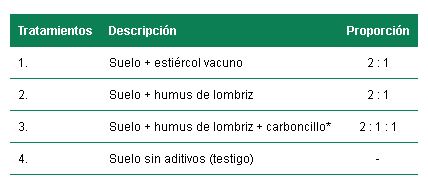Agroecological production of potato (Solanum tuberosum L.) with sex seed and use of nutritional alternatives
Main Article Content
Abstract
With the aim of producing potato tubers from the botanical seed for later reproduction for consumption, an experiment was carried out at the National Institute of Agricultural Sciences (INCA). Organic nutritional variants were included: soil plus manure and soil plus earthworm humus in a 2:1 ratio and a soil core without additives. In the seedbed at 15 days had already germinated 100 % of the seeds planted. In conditions of stonemasons the plant height was higher with the manure, doubling the control, the yield in number of tubers per plant and total mass were efficient in both variants, although the manure seems to exceed it. The inclusion of charcoal in worm humus showed no influence on the compound.
Article Details

This work is licensed under a Creative Commons Attribution-NonCommercial 4.0 International License.
Those authors who have publications with this journal accept the following terms of the License Attribution-NonCommercial 4.0 International (CC BY-NC 4.0):
You are free to:
- Share — copy and redistribute the material in any medium or format
- Adapt — remix, transform, and build upon the material
The licensor cannot revoke these freedoms as long as you follow the license terms.
Under the following terms:
- Attribution — You must give appropriate credit, provide a link to the license, and indicate if changes were made. You may do so in any reasonable manner, but not in any way that suggests the licensor endorses you or your use.
- NonCommercial — You may not use the material for commercial purposes.
- No additional restrictions — You may not apply legal terms or technological measures that legally restrict others from doing anything the license permits.
The journal is not responsible for the opinions and concepts expressed in the works, they are the sole responsibility of the authors. The Editor, with the assistance of the Editorial Committee, reserves the right to suggest or request advisable or necessary modifications. They are accepted to publish original scientific papers, research results of interest that have not been published or sent to another journal for the same purpose.
The mention of trademarks of equipment, instruments or specific materials is for identification purposes, and there is no promotional commitment in relation to them, neither by the authors nor by the publisher.
References
Estévez AV. El cultivo de la papa en Cuba. 1st ed. La Habana, Cuba: Ediciones INCA; 2007.1–4p.
Altieri MA, NichollsCI.Agroecologia: Única esperanza para la soberanía alimentaria y la resiliencia soccioecologica.2012, 7(2):65-68p.
Salomón JL, Estévez A,Castillo JG,Manso F.Yara: Una nueva variedad cubana de papa (SolanumtuberosumL.)para los productores 2007;28(1): 61p.
Hernández A. Manejo agronómico integral de sustratos, métodos de siembra y biofertilización en la producción sostenible de tubérculos-semilla de papa por semilla sexual. Cultivos tropicales. 2001; 22(2):21–7.
Hernández, A., Pérez, J.M., Bosch, D.y Castro, N.2015.Clasificacion de los Suelos de Cuba 2015.Instituto Nacional de Ciencias Agrícolas e Instituto de Suelos, Ediciones INCA.ISBN:978-959-7023-77-7.Mayabeque, Cuba, 91p.
Salomón J, Rodríguez J, Castillo J, Hernández A. Guía para la producción de tubérculos-semilla de papa a partir de semilla sexual. 2015;5–8.
Edirisinghage K. Respuesta in vitro y en casa de cultivo de variedades cubanas durante la obtención de semilla original de papa (SolanumtuberosumL.) [Tesis de Diploma]: Instituto de Biotecnología de las plantas; 2015.15 p.
Osorio H.El intercalamiento y las coberturas como alternativas agroecológicas para elevar la sostenibilidad de un agroecosistema con rambután (NepheliumlappaceumL.)en Villa Comaltitlán, Chiapas, Á. Leyva Tutor [Dis.]Tesis en opción al grado de Doctor en Ciencias,INCA. MES (2018) 100p.
